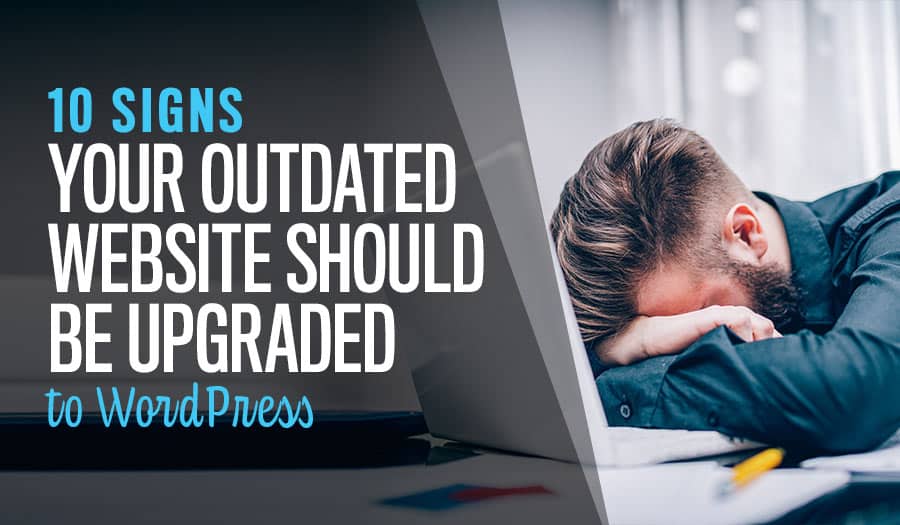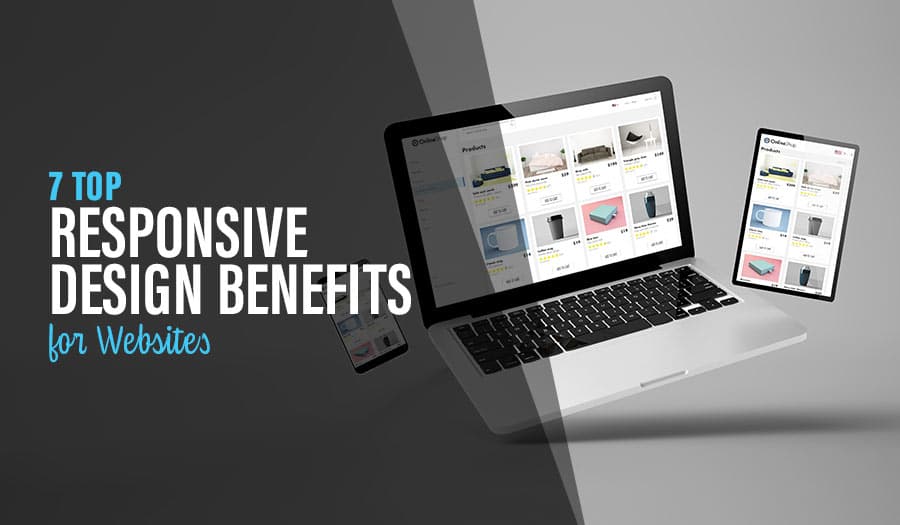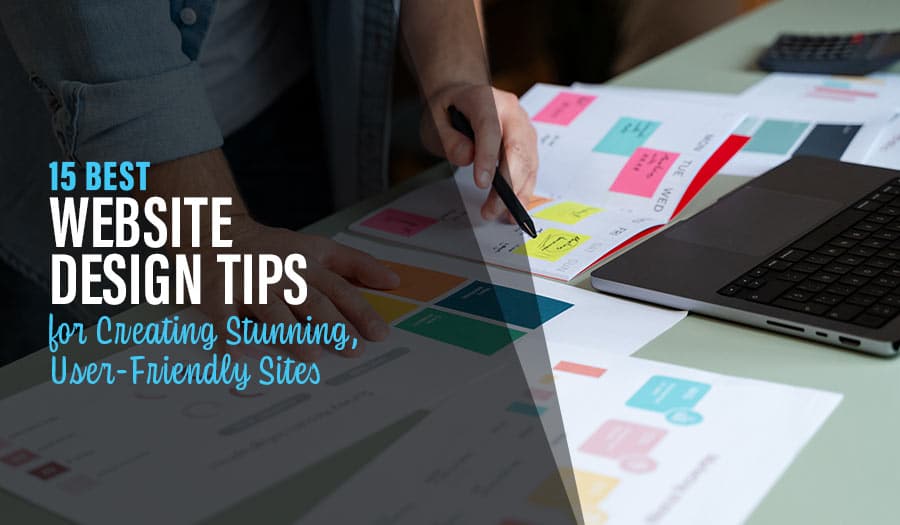There are two types of websites in today’s internet ecosystem: Those built on a CMS platform and those built without. WordPress is the leading CMS website platform, trusted by millions of businesses and individuals, making up about a third of the total websites In the whole world-wide-web. Let’s explore the 10 Signs Your Outdated Website Should Be Upgraded to WordPress.
There are some fantastic WordPress websites and some amazing WordPress developers to make them. And when it comes to a reliable business website that does everything and can be easily kept at the cutting-edge, a modular platform website like WordPress is your best available tool.
However, many brands are currently working with older custom websites from earlier days. It may be the result of a past contract, long over. It might be the legacy of a previous marketing director or web admin. It might have been the perfect website for your brand a few years ago–but not anymore. If you are thinking about overhauling your current custom-made website, there are many reasons to upgrade to WordPress. Commercial websites built with WordPress are still completely customisable, but they can also be quickly built with all the standard features and security that a modern website needs.
Let’s dive more deeply into the signs that your custom website has become ‘legacy’ and would benefit from an upgrade to WordPress.
10 Signs Your Outdated Website Should Be Upgraded to WordPress
- The Features are Out of Date
- There Is No Dashboard for Employees to help edit the website
- Your APIs Have Stopped Working
- Consistently Poor SEO Performance
- You Can’t Make Changes Without the Original Designer
- Page Navigation is a Nightmare
- Customers are Confused by the UX
- The Design Doesn’t Support Re-Branding
- Competitors are Using WordPress with Results
- You Want a Complete, Reliable, and Easy Business Website
1. The Features are Out of Date
A website’s features are a unique way to date the design. Modern websites are constantly updating, and the recent rise in growth-driven design emphasises a constant cycle of updates. You can tell the latest and cutting-edge websites by the features included on their sites. Live chat in a floating bubble was the hot trend in 2018-2019. Live-tracking orders on a map, block by block, is the latest hot trend, with deliveries at an all-time high. Having a blog and self-service help centre is old news, already mandatory.
If your website is behind the curve, custom designs are not unusual. Custom website design is –often static and final when the website is complete. The features may be built perfectly or not, but they are not connected to updating modules, and there may be no way to add more options to current features or build new features onto the current self-contained design.
WordPress makes it possible not only to update your features to what is modern today but also to plan for the future. It’s simple for someone who understands the platform to add a new feature plugin or update current features to the latest version.
2. There Is No Dashboard for Employees to help edit the website
Once, websites were an enigma, managed only by the coders who built them. But that’s not how website management works any more back-end dashboards for employees is now industry-standard. It should be easy for your team to manage product pages, change the page content, add blogs, answer questions, moderate the forums, and so much more. Every aspect of the website is manageable by the company, and it doesn’t have to require IT staff.
With a modern modular-design website, as with WordPress, your website automatically comes with an admin dashboard that expands with each plugin extension and new feature. You can expand your tools with plugins and new user features will be backed with dashboard controls, which will be convenient for your team.
3. Your APIs Have Stopped Working
Modern websites often live and breathe on their APIs. These are the code connectors that link your website to other services and features. A Google Maps API, for example, allows you to hook that set of features into a tool on the website. Your CRM API connects your customer database to the website they interact with.
A custom website can have custom APIs, but they expire over time. The services you connect to, like Maps, update while your custom API code does not. This is one of the most profound problems with custom websites, an issue that goes unnoticed until an API breaks and can’t be repaired.
WordPress, the leading platform for commercial web development, has thousands of APIs, constantly updated and maintained by live teams. In fact, developers of those handy tools you want to link make their own WordPress APIs, guaranteed to work with company support, in order to reach their clientele better.
4. Consistently Poor SEO Performance
SEO is about so much more than writing good copy. The way each page of your website is built from the ground up can influence your final page ranking, and the algorithm changes constantly. WordPress devs are constantly honing the platform and the most-used plugins to help websites reach greater SEO. But a static custom design is almost always behind the curve for optimised search-engine design. By the time the website is designed and completed, there might be updates to make.
5. You Can’t Make Changes Without the Original Designer
Some custom websites are designed in an organised way in a common programming language. Devs do this so that future contractors can pick up where their design left off. Unfortunately, not all custom web designers do (or can) write code clean enough to be worked with by others. There are too many custom websites out there that confuse and frustrate anyone hired to work on them.
If you have been told by contractors that updating your website would require a complete overhaul, you are probably in this boat. Few programmers like to openly tell a client that the previous code is too complicated or disorganised to make changes, but it is often the truth. A custom website that can’t be updated will quickly fall out of date. Updating to WordPress will streamline your website overhaul and ensure that your new website can be quickly, easily, and often automatically updated in the future.
6. Page Navigation is a Nightmare
The navigation of a custom website is determined by the designer. They can choose any page and have it connect to any other page. There might be a navigation bar, there might not. There might be a breadcrumb trace, there might not. And if there are, these features might only be available on certain pages.
Navigation in a custom website can be industry standard, but when it’s not, customers notice. You lose business when your web visitors can’t find a page because navigation doesn’t make sense or your search feature doesn’t work. With a WordPress site, navigation works exactly the way your customers expect it to. There will be a Home, About, Services, and Contact page. There may be product pages, a blog, service pages, and information content. All of it will be easy to find and guarantee the navigation bar will stay on every page.
7. Customers are Confused by the UX
Beyond navigation is the general UI/UX, your interface elements. UI (user interface) and UX (user experience) are made up of your page layout and interactive elements. Where are the buttons? How do customers sign up? Can they follow a call to action? Can they complete the purchase process without making a mistake?
There are so many little ways that User Interface design has been honed to streamline the user experience. WordPress makes it easy by providing most of the best practices out-of-the-box. Customers know how to navigate and interact with a WordPress website because they’ve interacted with the platform thousands of times before. Your designers will ensure that your website is unique while maintaining the clean, easy-to-use style that has made WordPress so effective in the business world.
8. The Design Doesn’t Support Re-Branding
Website design includes an important mix of colour and images that make up your brand. It sets your website apart from all other websites with similar functions. A custom website may have the personality of your brand hard-coded into the design, but this isn’t always convenient for the company itself. That branded design may have been perfect once, but times and brands change.
Whether you want to make small artistic changes or overhaul the visual design of your website to support a new brand, can you? A legacy custom website may be harder than you realise to change out the colours and replace the current visual design elements. A WordPress site, on the other hand, was designed from the ground up to be accessible for thousands and millions of different brands – therefore, rebranding is a core feature necessary to the millions of brands all using the website platform in their own unique ways.
9. Competitors are Using WordPress with Results
One of the driving motivations for change in a business is competition. Often, the sight of a competitor pulling ahead–even a little– in the race can cause us to look around and see how we can get that same edge or lose something that is holding us back. In this case, it’s both. You may have recently noticed a competitor’s website doing very well, beating you at SEO and drawing more traffic than their usual share.
Why worry about their success when you can learn from their tactics? If your competitors have recently built a WordPress website and are reaping the results, you deserve that same edge in your shared market. Don’t let your competitors get ahead. Put WordPress to use to rival their online results.
10. You Want a Complete, Reliable, and Easy Business Website
Last but not least, you might already know what you want. WordPress is built to be complete and is known for being reliable. WordPress websites can be expanded, honed, hardened, and secured. WordPress websites are organised, customisable, and put all the tools in your hands. You can even trust your team to manage the website better because WordPress makes site management easy.
So are you convinced your Outdated Website Should Be Upgraded?
If you’re looking for a complete, reliable, and hassle-free website, WordPress is where to go. If you already have a website built custom and no longer ideal, then overhaul your website with a plan for the future and a platform your admin employees will love. Contact us today to learn more!
Speak to the WordPress experts and take your business to the next level with a Pixel Fish Website.
Check out some of our latest Website Design projects.
Further Reading:
Tips For Creating A Sitemap For Your Business Website
Read More
Better E-Commerce Website Tips: 4 of The Best
Does Packaging Design Matter For Online Shopping?
5 Steps to Boost Sales With Your eCommerce Website Customer Support
Why Combining E-commerce and Social Media is the Key to Success
Top 9 Key E-Commerce Product Page Fundamentals You Must Have On Your Website
6 Reasons Why You Should Use WordPress for eCommerce
Top 8 Advanced WordPress Features and Plugins to Beat Your Competition
Top 10 Installing WordPress Plugins Best Practices
Reinvent Your Website Lead Generation Strategy with Engaging Content
How Professional Custom Web Design can help your business stand out online
5 Signs Your Business Needs a Content Marketing Agency
Get the Best Custom Website Design Solution for Your Business



